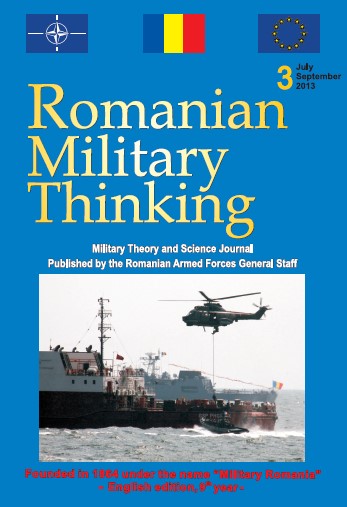REORGANISATION OF THE US STRATEGIC NUCLEAR FORCES DURING THE GEORGE W. BUSH ADMINISTRATION (JANUARY 2001-JANUARY 2009)
REORGANISATION OF THE US STRATEGIC NUCLEAR FORCES DURING THE GEORGE W. BUSH ADMINISTRATION (JANUARY 2001-JANUARY 2009)
Author(s): Alexandru-Tudor DIACONUSubject(s): Military history, Security and defense, Military policy, Transformation Period (1990 - 2010), Peace and Conflict Studies
Published by: Centrul tehnic-editorial al armatei
Keywords: rogue states; nuclear terrorism; strategic forces; missile defence; nuclear strategy;
Summary/Abstract: After the end of the Cold War, the international nuclear environment is marked by profound changes. For the United States, the biggest challenge is no longer Moscow’s atomic arsenal. At the beginning of the 21st century, the greatest threat that Washington has to deal with is represented by the mixture of rogue states, terrorist cells and weapons of mass destruction. The new threats are often unpredictable. Given the new state of affairs, the George W. Bush administration changes the way the US strategic nuclear forces are organised: the nuclear arsenal is reduced and modernised (in order to be as flexible as possible), missile defence assets are deployed, and nuclear non-proliferation efforts are reinforced. The Bush administration basically tries to counter the new nuclear threats using all available means.
Journal: Romanian Military Thinking
- Issue Year: 2013
- Issue No: 3
- Page Range: 159-166
- Page Count: 8
- Language: English

